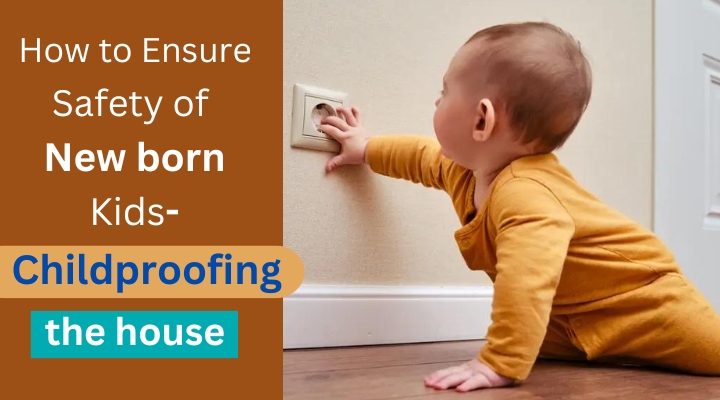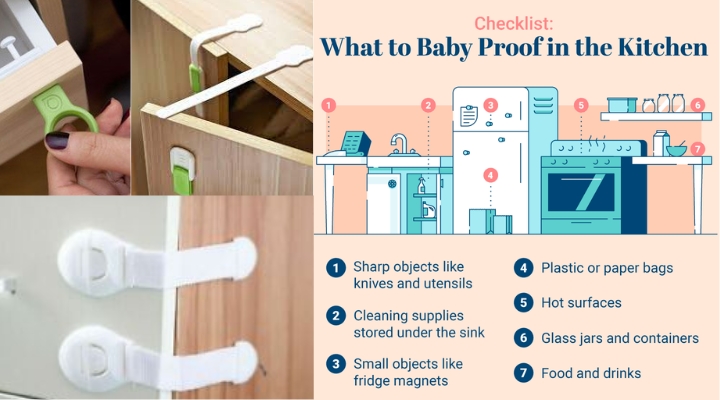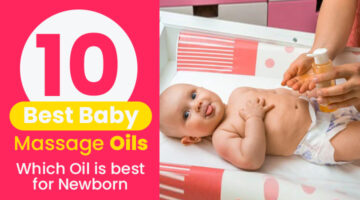How to Ensure Safety of Newborn kids- Childproofing the house!
Welcoming a newborn into your home is a joyous occasion filled with excitement and anticipation. In this comprehensive guide, we will explore How to Ensure Safety of Newborn kids- Childproofing the house! that require attention and provide practical tips for effective childproofing. As parents, ensuring the safety of our newborns is of paramount importance. One way to create a safe environment for our little ones is by childproofing our homes. By implementing recommended safety practices, using child products that meet safety standards, and employing child safety devices, we can significantly reduce the risk of injuries.
How to Ensure Safety of Newborn kids- Childproofing the house!
The Importance of Childproofing
Newborns and infants are naturally curious and eager to explore their surroundings. However, their limited mobility, lack of understanding of potential dangers, and underdeveloped motor skills make them vulnerable to accidents and injuries. Childproofing your home helps prevent accidents and creates a secure environment that allows your child to develop and thrive without unnecessary risks.
Related- 6 Ways To Stop Your Babies From Thumb-Sucking
1. Assessing Your Home-
Before you begin the childproofing process, it’s crucial to conduct a thorough assessment of your home. This involves identifying potential hazards and areas that require special attention. Keep in mind that childproofing is an ongoing process, as your child’s abilities and needs will change as they grow.
2. Room-by-Room Analysis-
Start by examining each room in your home. Take note of objects, furniture, and areas that could pose a threat to your child’s safety. Common rooms to focus on include the nursery, living room, kitchen, bathroom, and any other areas your child may have access to.
Nursery-
Crib Safety- Ensure the crib bars are spaced at a safe distance to prevent the baby from getting stuck. Avoid using crib bumpers, pillows, or heavy blankets that could pose suffocation risks.
Secure Furniture- Anchor heavy furniture like dressers and bookshelves to the wall to prevent tipping accidents.
Cord Management- Keep cords from blinds and curtains out of the baby’s reach to prevent strangulation.
Living Room-
Electrical Outlets- Install outlet covers or safety plugs to prevent the baby from inserting objects into the outlets.
Corners and Sharp Edges- Cover sharp corners and edges of furniture with soft padding to prevent injuries during falls.
Electronics- Keep remote controls, small gadgets, and cords out of reach to prevent choking and electrical hazards.
Plant Safety- Remove poisonous plants or keep them well out of reach.
Also check – 7 Fun & Exciting Monsoon Activities For Kids!
Kitchen-
Cabinet Locks- Install locks on cabinets containing cleaning supplies, sharp objects, and potentially harmful substances.
Stove Safety- Use stove knob covers to prevent accidental burner activation and keep pots and pans handles turned away from the edge.
Small Objects- Keep small objects like magnets, coins, and buttons out of reach to prevent choking hazards.
Bathroom-
Toilet Safety- Install a toilet lock to prevent drowning risks.
Medicine and Toiletry Storage- Store medications, toiletries, and cleaning supplies in a high and secure place.
Slip Prevention- Use non-slip mats in the bathtub and on the bathroom floor to prevent accidents.
General Safety Tips-
Window Guards- Install window guards on windows that are above the first floor to prevent falls.
Fireplace Protection- Use a fireplace screen or barrier to keep the baby away from flames and hot surfaces.
Gates- Use safety gates at the top and bottom of stairs and in doorways to prevent access to potentially hazardous areas.
Blind Cords- Keep blind cords out of reach or use cordless blinds to prevent strangulation hazards.
Go for – 6 Healthy & Tasty Breakfasts For Your Kids- You Must Know
3. Secure Furniture and Fixtures-
As your baby starts to explore and learn to stand, they might pull on furniture or try to use it to steady themselves. Ensure that heavy furniture, like bookshelves, dressers, and TVs, are securely anchored to the wall to prevent tipping accidents. Use furniture straps or brackets to fasten these items, and always keep the top-heavy items off lower shelves.
4. Eliminate Choking Hazards-
Newborns are naturally curious and explore the world by putting objects in their mouths. It’s crucial to eliminate small objects that could pose choking hazards. Get down on your hands and knees to see things from your baby’s perspective and remove any small items within reach.
5. Electrical Safety-
Electrical outlets and cords can pose serious risks to newborns. Install outlet covers or safety plugs to prevent the baby from inserting objects into the outlets. Use cord organizers to keep electrical cords out of reach and prevent tripping hazards. If possible, cover power strips and surge protectors to prevent curious fingers from tampering with them.
6. Safety in the Kitchen-
The kitchen is full of potential hazards for a curious baby. Install cabinet locks on cabinets containing cleaning supplies, sharp utensils, and potentially harmful substances. Use stove knob covers to prevent accidental burner activation and keep pot handles turned toward the back of the stove. Consider using a safety gate to keep the baby out of the kitchen while you’re cooking.
7. Baby-Proofing Technology and Appliances-
Modern homes often have various appliances and technology that need attention when baby-proofing:
- TV and Entertainment Systems- Secure TVs and entertainment systems to prevent them from toppling over.
- Appliances- Keep appliances like blenders, toasters, and coffee makers unplugged when not in use. Store cords out of reach.
- Cords and Wires- Use cable organizers or adhesive cord clips to secure cords and prevent the baby from pulling on them.
8. Create Safe Play Areas-
Designate safe play areas where you can confidently let your baby explore without constant supervision. Use soft play mats to cushion falls and ensure that there are no small objects, cords, or sharp edges within the play area.
9. Window and Balcony Safety-
Windows and balconies can be dangerous for babies, especially as they start crawling and walking. Install window guards on windows above the first floor to prevent falls. Keep furniture away from windows to prevent the baby from climbing up and potentially falling.
10. Educate Caregivers and Visitors-
If you have caregivers or visitors in your home, ensure they are aware of the safety measures you’ve put in place. Share the importance of keeping small objects, medications, and cleaning supplies out of reach and remind them to close gates and doors behind them.
You can go for – How To Massage A Newborn Baby- Best Tips & Techniques
Potential Hazards
Some common hazards to look out for include:
- Heaters- Cover or block access to radiators and floor heaters to prevent burns.
- Matches, lit candles, and lighters- Keep these items out of your child’s reach to prevent accidents.
- Medicines, chemicals, and cleaning supplies- Securely lock cabinets containing these items to prevent accidental ingestion.
- Alcohol- Store all alcoholic beverages in locked cabinets or out of your child’s reach.
- Balloons– Avoid letting children under the age of 8 play with balloons as they pose a suffocation risk.
- Small objects- Keep small objects, such as coins, pins, and button batteries, out of your child’s reach to prevent choking hazards.
- Guns- Lock unloaded firearms in a cabinet to prevent accidents.
- Lead- If your home was constructed before 1978, consider testing for lead in paint or plumbing to protect against lead poisoning.
- Water- Always supervise your child around water to prevent drowning, even in shallow areas.
- Houseplants- Remove toxic plants or move them out of your child’s reach.
By addressing these additional hazards, you can further enhance the safety of your home environment for your newborn.
Continuous Supervision and Education
Childproofing is a vital step in ensuring your child’s safety, but it does not replace the need for constant supervision. Always keep a watchful eye on your child, especially as they become more mobile and curious. Additionally, educating yourself about first aid and CPR for infants can provide you with the knowledge and skills to respond effectively in case of emergencies.
Childproofing your home is an essential undertaking that requires careful planning, thorough assessment, and consistent implementation of safety measures. By identifying potential hazards, securing dangerous areas, and creating a safe and nurturing environment, you can provide your newborn with the freedom to explore, learn, and grow without unnecessary risks. Remember that childproofing is an ongoing process that evolves as your child develops new skills and abilities. Through a combination of vigilance, education, and proper childproofing, you can ensure that your home is a haven of safety for your precious newborn.










